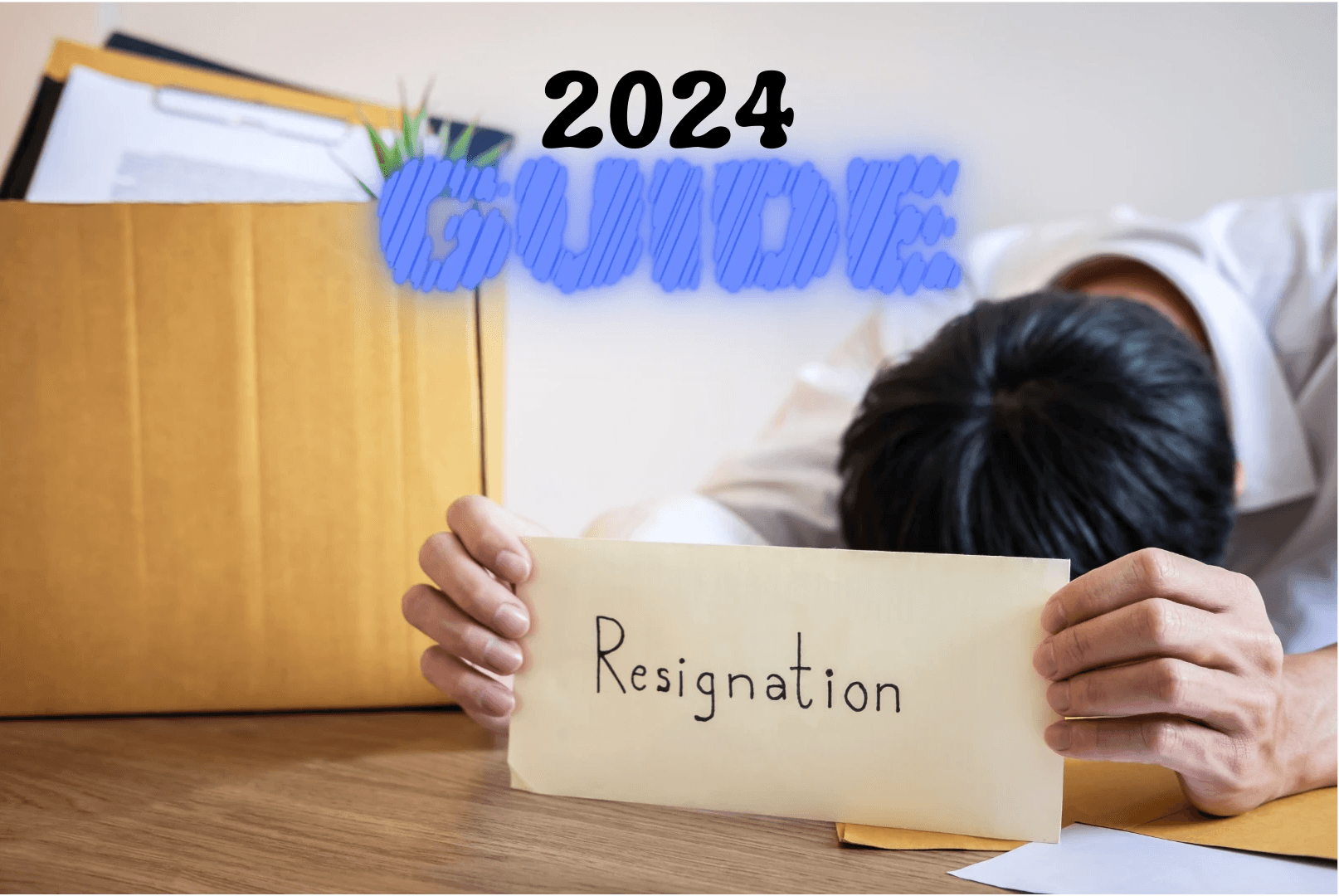Ultimate Guide to Writing a Resignation Letter in 2024
27 juin 2024
James Dean
A resignation letter is a formal document that an employee writes to their employer to announce their intent to leave their current position. Writing a resignation letter is a crucial step in the resignation process, as it sets the tone for your departure and ensures a professional exit. This guide provides detailed instructions on writing an effective resignation letter, complete with sample templates, best practices, frequently asked questions, and useful backlinks to relevant resources.
Why a Resignation Letter is Important
A resignation letter is important for several reasons:
Professionalism: It shows your employer that you are leaving on good terms and maintaining professionalism.
Documentation: It serves as a formal record of your intent to leave, which can be important for HR processes.
Transition: It helps your employer prepare for your departure and plan for a smooth transition.
Key Components of a Resignation Letter
Header: Include your name, address, email, and date.
Recipient’s Details: The name, title, and address of your supervisor or manager.
Salutation: A formal greeting (e.g., "Dear [Manager's Name],").
Introduction: State your intent to resign and include your last working day.
Body: Express gratitude, provide a reason for leaving (optional), and offer assistance with the transition.
Conclusion: Close with a professional sign-off and your signature.
Best Practices
Be Concise: Keep the letter brief and to the point.
Be Positive: Focus on positive aspects of your experience and express gratitude.
Provide Notice: Offer at least two weeks' notice, or as per your employment contract.
Offer Assistance: Show willingness to help with the transition.

Detailed Steps to Write a Resignation Letter
Gather Information: Know the name and title of your supervisor, your last working day, and any specific details you want to include.
Draft the Letter: Use a structured format and ensure all key components are included.
Express Gratitude: Thank your employer for the opportunities and experiences.
Review and Proofread: Check for accuracy and professionalism.
Submit the Letter: Deliver it personally if possible, and follow up with an email copy.
Sample Resignation Letter
Here’s a detailed sample of a resignation letter:
[Your Name]
[Your Address]
[City, State, ZIP Code]
[Email Address]
[Date]
[Supervisor's Name]
[Supervisor's Title]
[Company Name]
[Company Address]
[City, State, ZIP Code]
Dear [Supervisor's Name],
I am writing to formally resign from my position as [Your Job Title] at [Company Name], effective [Last Working Day, typically two weeks from the date of the letter].
I have truly enjoyed my time working at [Company Name] and am grateful for the opportunities for professional and personal development that you have provided me. Working with such a talented and dedicated team has been an enriching experience, and I have learned a great deal during my tenure here.
I am committed to ensuring a smooth transition and am willing to assist in training my replacement or transferring my responsibilities to another team member. Please let me know how I can help during this transition period.
Thank you once again for the support and encouragement throughout my time at [Company Name]. I look forward to staying in touch and wish the company continued success in the future.
Sincerely,
[Your Signature]
[Your Printed Name]
Frequently Asked Questions
Q1: How much notice should I give?
The standard notice period is two weeks, but refer to your employment contract for specific requirements.
Q2: Should I include the reason for my resignation?
Including a reason is optional. If you choose to provide one, keep it brief and professional.
Q3: Can I resign via email?
While a physical letter is more formal, resigning via email is acceptable if circumstances require it. Ensure the email is professional and follows the same structure as a formal letter.
Q4: What if I have negative feelings about my job?
Focus on the positive aspects of your experience and express gratitude. Avoid airing grievances in your resignation letter.
Q5: Should I discuss my resignation with my manager before submitting the letter?
Yes, it's courteous to have a conversation with your manager before submitting your resignation letter.
Q6: Can I retract my resignation?
Once submitted, retracting a resignation can be difficult. Consider discussing any concerns with your manager before making a final decision.
Q7: What if my employer asks me to leave immediately?
Be prepared for this possibility. Ensure all personal items and work documents are organized and ready for a swift departure.
Q8: How should I handle the exit interview?
Approach the exit interview with professionalism. Provide constructive feedback and remain positive about your experiences.
Q9: Should I offer to train my replacement?
Yes, offering to assist with the transition demonstrates professionalism and leaves a positive impression.
Q10: Can I use a resignation letter template?
Yes, templates can help ensure you include all necessary details. Customize the template to reflect your specific situation and relationship with the employer.
Additional Guidelines and Options
Collaboration Tools: Use tools like Google Docs or Microsoft Word for drafting and reviewing your resignation letter.
Template Availability: Access templates online that can be customized to fit your needs.
Legal Compliance: Ensure your resignation complies with the terms of your employment contract and local labor laws.
Advanced Tips
Plan Your Next Steps: Have a plan for what you will do after your resignation, whether it’s starting a new job, furthering your education, or taking some time off.
Keep It Confidential: Until your resignation is officially announced, keep the information confidential.
Exit Strategy: Develop an exit strategy to ensure you leave on the best terms possible, maintaining professional relationships and securing positive references.
Final Thoughts: Leaving with Grace and Professionalism
Resigning from a job is a pivotal moment in your career, marking the end of one chapter and the beginning of another. Writing a well-crafted resignation letter is crucial for ensuring a smooth and professional exit. This letter is more than just a formality—it’s a chance to leave on good terms and maintain positive relationships with your employer and colleagues.
By following these guidelines and using the provided templates, you can create a resignation letter that reflects your professionalism and gratitude. A well-written resignation letter clearly states your intention to leave, provides a reason (if appropriate), and expresses appreciation for the opportunities and experiences you’ve had.
Leaving a job gracefully is essential for your career trajectory. How you handle your resignation can impact future opportunities, as former employers and colleagues can become valuable references or even future collaborators. It’s important to resign thoughtfully, giving ample notice and offering to help with the transition.
Remember, the way you leave a job speaks volumes about your character and professionalism. Taking the time to craft a thoughtful resignation letter and exiting on good terms ensures that you leave a positive impression. This consideration can open doors to new opportunities and maintain the professional relationships you've built over your tenure.
So, as you prepare to resign, think about the legacy you want to leave behind. Approach your resignation with the same dedication and professionalism that you brought to your role. By doing so, you’ll pave the way for a bright and promising future in your career.








